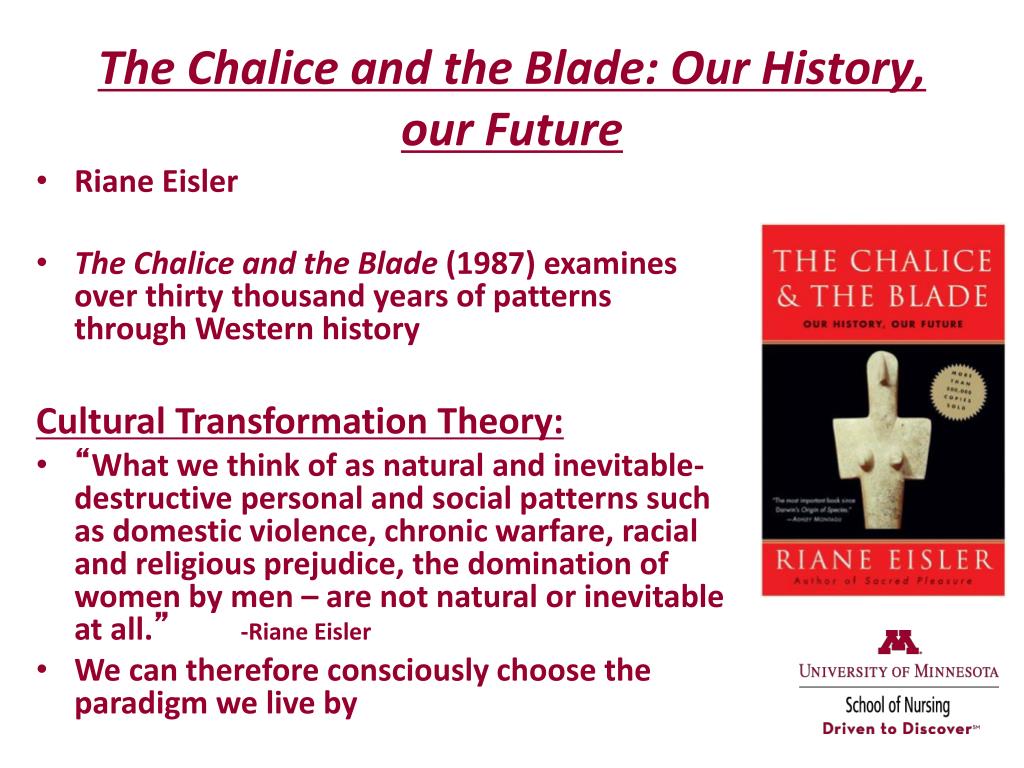



Such conditions do not generally contribute to growth, learning, or peace. This ranking structure then leads to conflicts - sometimes over trivial issues - that escalate, often leading to cycles of violence, resentment, and retaliation. Those on top fear loss of power and control while those on the bottom perpetually seek to gain it. Since there is no awareness of the partnership alternative, both parties live in fear. Such rankings lead to thinking limited to two dimensions: superior or inferior dominating or dominated. They routinely extend rights and freedoms to those on top and deny them to those on the bottom. Toward the dominator end of the spectrum, social systems organize relationships at all levels according to a hierarchy of control, status, and privilege. For example, using the lenses of these social categories makes it possible to see that caring for people, starting in childhood, and for the Earth are important in human and environmental terms. This orientation profoundly affects the society’s guiding system of values in all institutions, including business, government, and economics. Here, stereotypically feminine traits and activities such as caring, nonviolence, and caregiving are highly valued - whether they reside in women or men. In partnership systems, societies value both halves of humanity equally and recognize that humans are social animals with a unique wisdom and capacity to work and live together. This foundational ranking of one gender over the other sets in place a pattern of social rankings based on other differences, such as ethnicity, race, religion, and so on. The male and what is stereotypically considered masculine is valued over the female and the stereotypically feminine. In dominator systems, social ranking begins with our most fundamental human difference-the difference between female and male. She documented that, from the beginning, some cultures oriented more to what she termed a dominator system and others to a partnership system - and that gender roles and relations are structured very differently in each (see “Dominator-Partnership Continuum” on p. Through two decades of research, Riane Eisler (one of the authors of this article) found a fundamental difference in how human societies evolved (for a detailed discussion, see The Chalice and the Blade: Our History, Our Future, Harper Collins Publishing, 1987). Explore the implications for teamwork at each end of the spectrum. Use the principles outlined in this article to determine whether your organization follows a “dominator” or “partnership” model. By understanding our options, we can make wise decisions. Whether we build this culture depends on the choices we make, from the seemingly insignificant to the most exalted.
CRITICISM OF THE CHALICE AND THE BLADE FULL
In fact, we do so each time we choose:Ī culture of partnership is one that supports our full humanity and helps us reach our highest human potential. The question that stands before us now is not who can take part in the cultural transformation needed to address these complex problems, but how shall we stand together to do so? Will we simply try to fix the problems we now face with the same mindsets that created them or will we learn to be together in new ways?įortunately, every person can participate in and contribute to the creation of a new global ethos of partnership and peace. We are aware that many are woefully inadequate to shape a future worthy of our descendants. Overwhelmed by complexity, we are beginning to question our government and business institutions. Our unease stems from an increasing sense that humanity’s bill for our impact on the health of the planet is now coming due. A growing awareness that humankind is facing unprecedented challenges is making many of us uneasy.


 0 kommentar(er)
0 kommentar(er)
